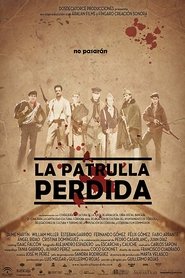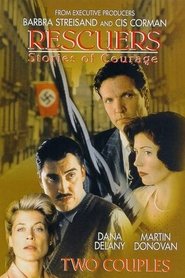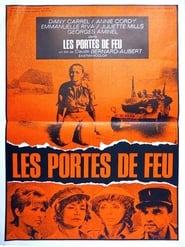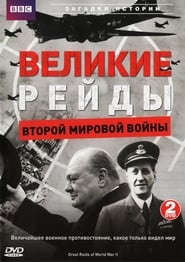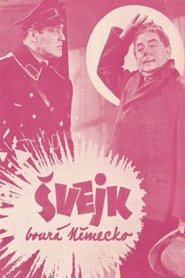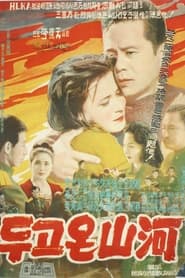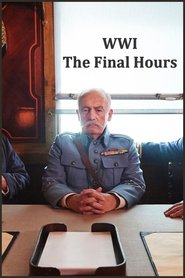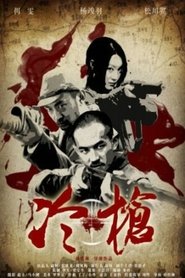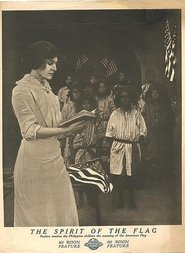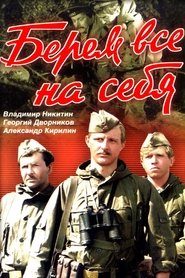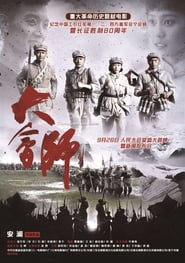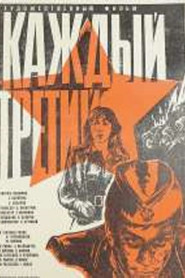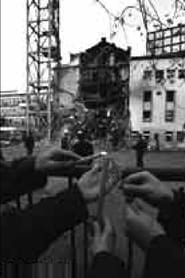Top Rated War Movies on Pantaflix - Page 327
-
The Lost Patrol
2009
The Lost Patrol
2009
star 71936. Somewhere in Andalusian countryside, a patrol of Spanish Republican soldiers cross the enemy lines to destroy a very important railroad for enemies communications. -
Rescuers: Stories of Courage - Two Couples
1998
star 1Two fact-based tales about citizens who risked everything, including their lives, to save Holocaust victims. -
Dayan
2018
Dayan
2018
star 7Set a day after the Syrian war began, Dayan paints a portrait of the thousands of refugees unable to return to their families once borders were established by terrorist groups. Seiban, an aging Syrian father living in exile with his family, has to make a choice: part with his special-needs children in order to escape, or keep them close and put the family's lives at the mercy of the military. As he struggles to decide, the world around his family crumbles under the weight of war, leaving little hope for their survival. -
Gates of Fire
1972
Gates of Fire
1972
star 6In October 1942, as an offensive was launched against Rommel's troops, a vehicle carrying a doctor and four nurses strayed into the desert. Prisoners of a German unit and aware that it was going to use them to ambush the Allied relief column, they set out to foil the plan. -
Great Raids of World War II
2006
star 5Showcases a series of daring raid made by various sections of the British military during World War II. The raids highlighted are "Stopping Hitler's A-Bomb", "Prison Busters", Radar Beam Raiders", "Storm at St. Nazaire", "Cockleshell Raiders" and "Arctic Commando Assaults". Each raid is analyzed, the reasons for it taking place, the planning and execution plus the results and consequences. -
Schweik's New Adventures
1943
star 8Nazis are nothing to the wily good soldier Schweik (Lloyd Pearson). -
We Were Comrades: The End
2016
star 10Based on Wehrmacht soldier Hellmut Böttgert's experiences during the last years of World War II. -
The Country Left Behind
1962
star 7Before the Korean War (1950-1953), a daughter of a Russian soldier stationed at Heungnam falls in love with a young Korean anti-Communist. Their love story shows how cruel the Russian soldiers were and how badly many North Koreans craved for freedom. -
Le 7ème jour de Saint-Malo
1960
star 1End of WW2 : the German officers lock all the men between 18 and 65 into the "Fort National" on an islet in Saint-Malo. -
WW1: The Final Hours
2018
WW1: The Final Hours
2018
star 6The final hours/days, events and people leading up to the end of WWI. -
The Tales of Ensign Stål
1926
star 7Based on the poems by finnish poet Johan Ludvig Runeberg, the movie centers on the Finnish War between Russia and Sweden in 1808. -
A Childhood We Didn't Know...
2017
star 31917, Yakutia. 9-year-old Mikita is growing up beyond his years, as he, along with adults, learns the difficult life of a Yakut cattle breeder, where every day is a struggle for survival. New challenges await the boy, as the events of the revolutionary, rebellious time violently invade the traditional way of his family, violating the values and way of life that have been established for centuries. -
Snipers Shot
2016
Snipers Shot
2016
star 10The villagers in a small mountain village during the Anti-Japanese War were exposed to the burning, killing and looting of the Japanese invaders. Anti-Japanese War with the Japanese in the end the story. Yang Jun feather starring Geshan, is a grass-roots hero from a small village. This movie strongly appeals to me is to pay attention to authenticity, but also this character is very cute. -
The Spirit of the Flag
1913
star 5Dr. Reid, a young American physician in the Philippines, risks his life in the cause of patriotism, and eventually wins the love of the girl of his choice. With the idea of developing in the natives in his community the spirit of manly citizenship, Dr. Reid requests the War Department to furnish him with a number of discarded Winchesters with which to drill the natives. His request is granted, but he runs afoul with the occupant Spanish army. -
We Take Everything Upon Ourselves
1981
star 5During the final months of the World War II, a group of special forces sailors, under the command of Lieutenant Balandin, receives a secret order of special importance to destroy enemy tankers, seaplanes and gun installations to ensure the free landing of their troops. -
大会师
2016
-
Sheyda
1999
Sheyda
1999
star 8Farhad has lost his eyesight due to an injury sustained in battle. As part of his recovery, he is transferred to a temporary hospital, where he encounters young nurse Sheida. Sheida is surprised by his tolerance to the pain of his injury, but soon realises that her recitation of Quran verses has a miraculous calming effect on him. And as the two start to grow closer and Farhad begins to heal, they find themselves on the path between faith and hope, and the true nature of both is revealed to them. -
Every Third
1980
-
02:06 - The Anatomy of Pain
2001
star 7The search for truth of the 16 families of technicians killed in the April 23rd, 1999, NATO bombing of the Radio Television Serbia building.
 Netflix
Netflix
 Amazon Prime Video
Amazon Prime Video
 Apple iTunes
Apple iTunes
 Apple TV Plus
Apple TV Plus
 Disney Plus
Disney Plus
 Google Play Movies
Google Play Movies
 Paramount Plus
Paramount Plus
 Hulu
Hulu
 HBO Max
HBO Max
 YouTube
YouTube
 fuboTV
fuboTV
 Peacock
Peacock
 Peacock Premium
Peacock Premium
 Amazon Video
Amazon Video
 The Roku Channel
The Roku Channel
 AMC+
AMC+
 Kocowa
Kocowa
 Hoopla
Hoopla
 The CW
The CW
 Vudu
Vudu
 Starz
Starz
 Showtime
Showtime
 PBS
PBS
 Pantaflix
Pantaflix
 FXNow
FXNow
 Tubi TV
Tubi TV
 Kanopy
Kanopy
 Comedy Central
Comedy Central
 Crunchyroll
Crunchyroll
 Microsoft Store
Microsoft Store
 Redbox
Redbox
 Sun Nxt
Sun Nxt
 ABC
ABC
 DIRECTV
DIRECTV
 Crackle
Crackle
 Fandor
Fandor
 Plex
Plex
